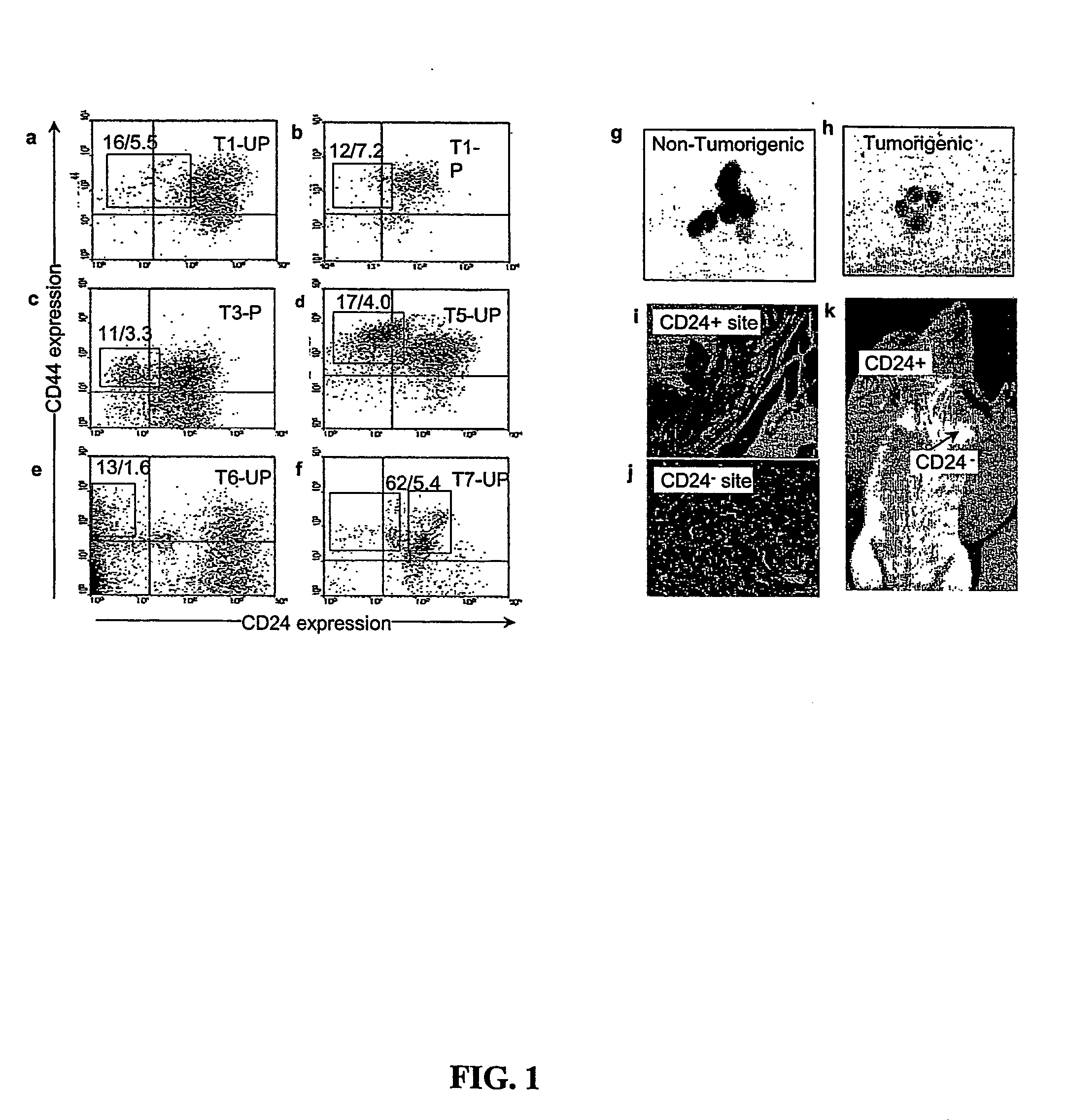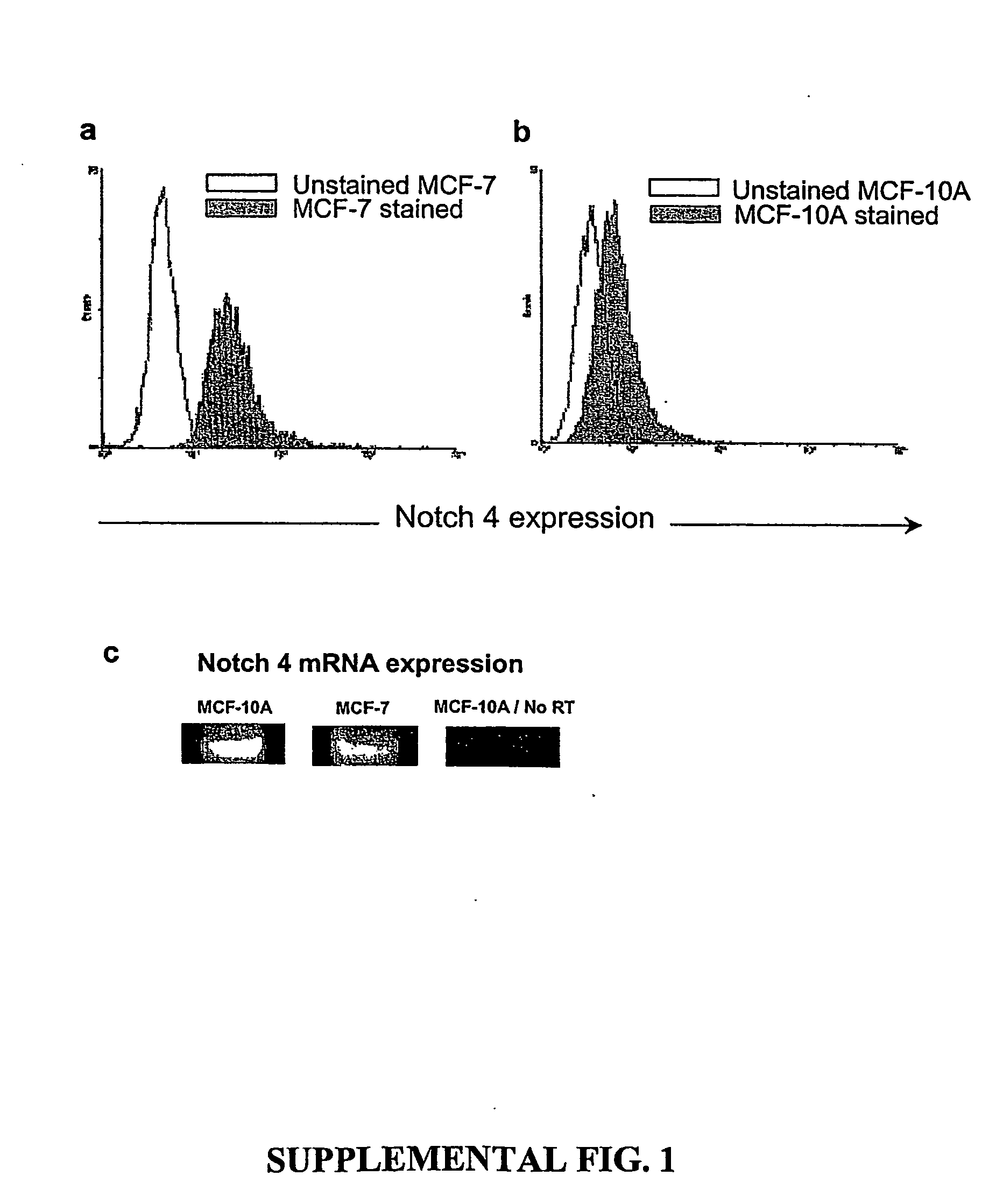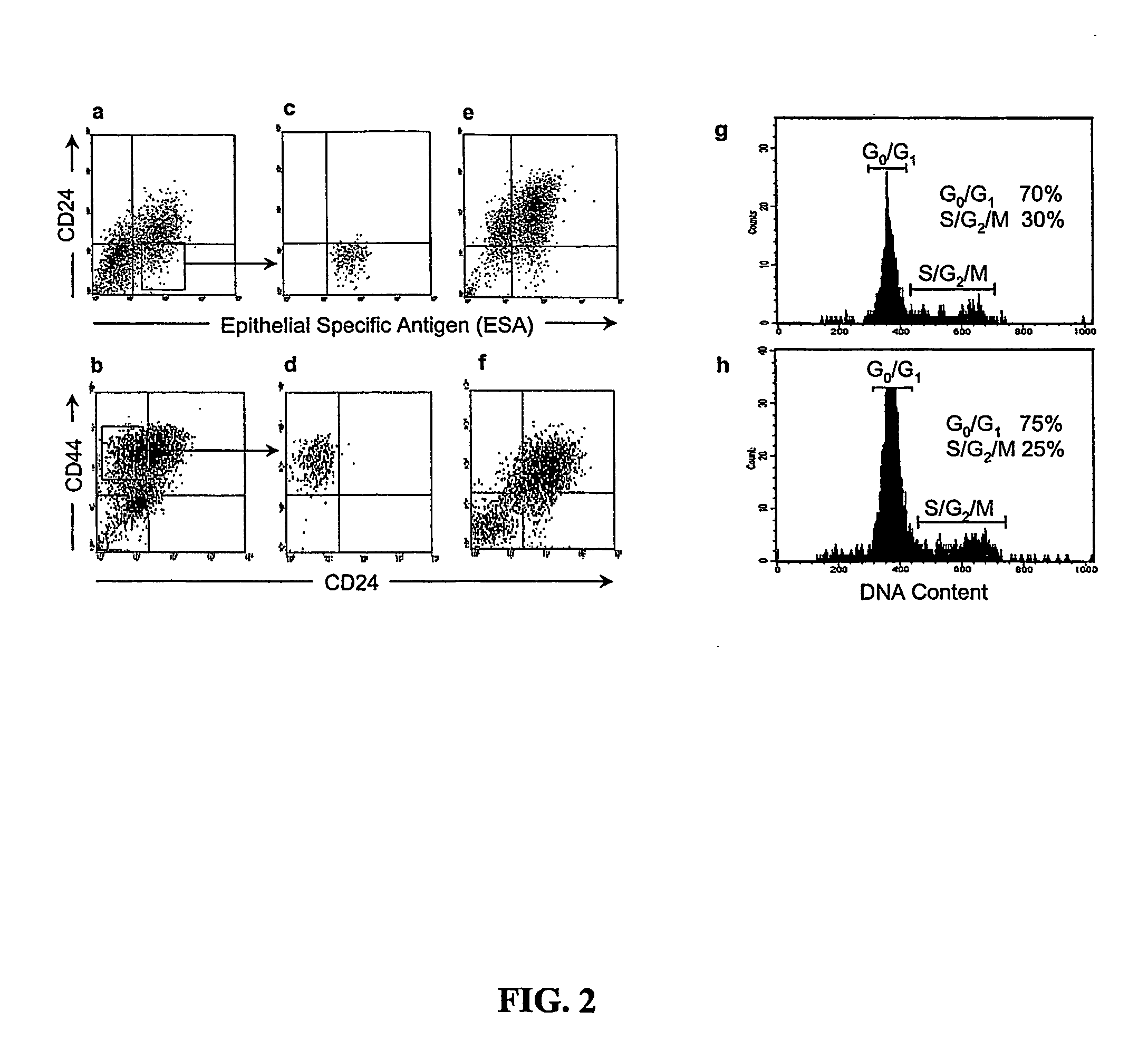Prospective identification and characterization of breast cancer stem cells
a breast cancer and stem cell technology, applied in the field of biological material investigation or analysis, can solve the problems of notch4-signaling impairing the growth of solid tumor stem cells, and the therapy of significantly improving outcomes
- Summary
- Abstract
- Description
- Claims
- Application Information
AI Technical Summary
Benefits of technology
Problems solved by technology
Method used
Image
Examples
Embodiment Construction
[0016] Introduction. By this invention, the principles of normal stem cell biology have been applied to isolate and characterize solid tumor stem cells generally. Solid tumor stem cells are defined structurally and functionally as described herein; using the methods and assays similar to those described below. Solid tumor stem cells undergo “self-renewal” and “differentiation” in a chaotic development to form a tumor, give rise to abnormal cell types, and may change over time as additional mutations occur. The functional features of a solid tumor stem cell are that they are tumorigenic, they give rise to additional tumorigenic cells (“self-renew”), and they can give rise to non-tumorigenic tumor cells (“differentiation”). The developmental origin of solid tumor stem cells can vary between different types of solid tumor cancers. Typically, solid tumors are visualized and initially identified according to their locations, not by their developmental origin. Accordingly, one can use the...
PUM
| Property | Measurement | Unit |
|---|---|---|
| Cell death | aaaaa | aaaaa |
| Size | aaaaa | aaaaa |
| Surface | aaaaa | aaaaa |
Abstract
Description
Claims
Application Information
 Login to View More
Login to View More - R&D
- Intellectual Property
- Life Sciences
- Materials
- Tech Scout
- Unparalleled Data Quality
- Higher Quality Content
- 60% Fewer Hallucinations
Browse by: Latest US Patents, China's latest patents, Technical Efficacy Thesaurus, Application Domain, Technology Topic, Popular Technical Reports.
© 2025 PatSnap. All rights reserved.Legal|Privacy policy|Modern Slavery Act Transparency Statement|Sitemap|About US| Contact US: help@patsnap.com



